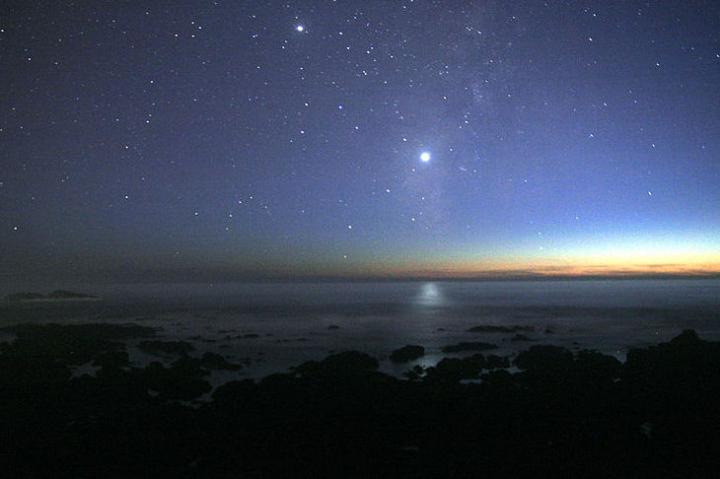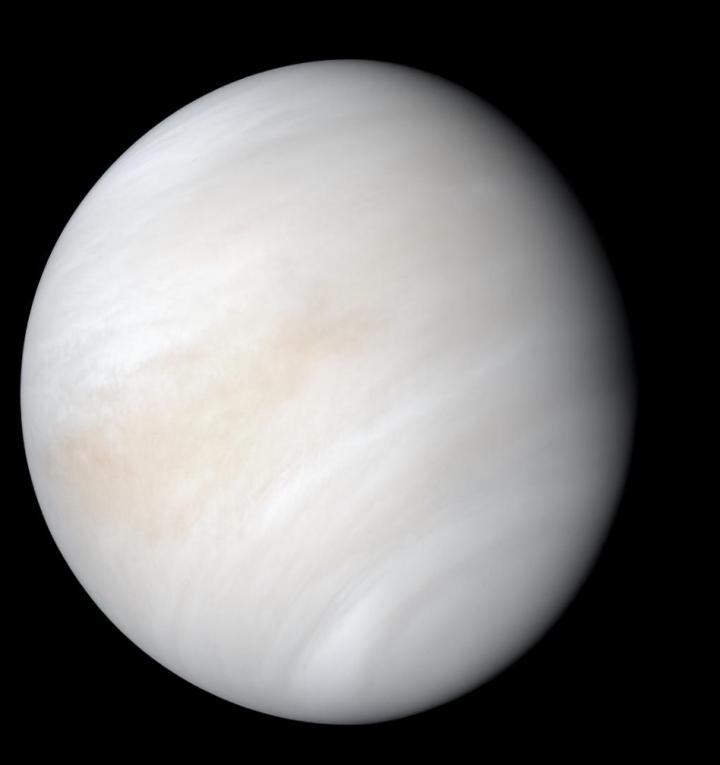It’s not well known, but autumn has the year’s darkest skies. Since there are now fewer brilliant stars than at any other time, many will marvel at two ultra-bright “stars.” What are they? Oddly, this is a period when many report these dazzling beacons as UFOs.
Autumn begins night sky season. It gets dark earlier at night and the night temperatures are still comfortable. Although the Milky Way now splits the sky from North to South as seen from rural areas during moonless evenings like this week, the night seems to be lacking in bright stars as many of the constellations contain fine deep-sky objects. (The only except is the bright, solitary star Fomalhaut.)
- Due to these dark skies, many folks will marvel at the single super-dazzling object that dominates the southern sky most of the night. It’s the planet Jupiter. You needn’t even wonder about it. If it’s in the southeast, south, or southwest and far more brilliant than anything else, it’s Jupiter. Count on it.
- But early on, when evening twilight is still fading, another ultra-bright “star” hovers low just above where the Sun has set. This is Venus, which will grow even brighter as our cold season progresses.
See when the planets rise and set!
Venus and Jupiter, true lighthouses that dwarf anything else the night sky can offer this week.
Planet Venus, taken from Mariner 10. The surface is covered in highly reflective clouds, which makes Venus bright.
Mistaken for UFOs
Believe it or not, these two dazzling planets are now inspiring UFO reports to observatories everywhere, including the two that I run.
This is a period when videos taken by U.S. military aviators are showing strange moving objects that are true UFOs (meaning they are genuinely unidentified), attention is currently more UFO-oriented than usual.
The planet Venus most frequently gets mistaken for a UFO. To viewers on Earth, this object often appears as a bright light that hangs in the sunset sky, seeming to slowly hover in the twilight as it outshines every star except for the Sun. Since Venus orbits the Sun inside our own orbit, it looks as if it’s constantly darting out on either side of the Sun, which can seem UFO-like.
Venus is the brightest of all planets. It makes Sirius, the brightest star in the night sky, look feeble. At sundown, Venus materializes close to the western horizon where it can beam through trees. It almost feels as if a blue-white light is following you!
Remember, even the smartest people have been taken in by dazzling planets. Jimmy Carter, a nuclear engineer, reported a UFO to the state police when he was governor of Georgia, which proved to be Venus. And a squadron of B-17s returning from a bombing mission over Japan in WW2 saw a bright object that seemed to be keeping pace with them, and they turned around and tried – unsuccessfully – to shoot down Venus.
So, it’s fun to see these objects for yourself. Just re-read those first two paragraphs and it’ll be obvious how to make a foolproof identification. If you happen to own a telescope, Venus won’t currently show much, although Jupiter always reveals its dark stripes or belts, and its four enormous moons that change position from night to night. Indeed, when you look you might only see three, since a fourth commonly ducks behind or in front of the giant planet.
Bottom-line: If it’s a truly dazzling “star” and it’s roughly in the south and especially if it’s late, like after 9 PM, it’s Jupiter. But if twilight is still present, and the brilliant “star” is quite low in that sunset direction, it’s Venus!


